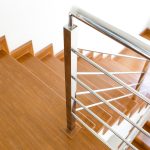If you’re in the automotive or general industry sector, then you probably already know a little about electroplating, the chemical process in which an electrical current is used to coat a conductive object with a thin layer of another material, such as zinc, chrome, or zinc nickel.
Many plating companies offer a number of different methods for plating your desired objects, which can sometimes make it hard to sort through the subtle nuances of each process to decide which one is right for your project. Here are some of the differences and pros and cons for two of the most popular plating methods.
Rack Plating 101
For this process, the parts needing to be coated are arranged on metal racks and fixed using wires, screws, or spring fingers depending on their weight, size, and general configuration. These ranks are then dipped into a tank and kept stationary during the plating process. This process is commonly used with chrome and nickel finishes, and is most commonly used for finishing products utilized in the electronics, medical, automotive, and military industries.
The Pros and Cons
Rack plating is the best choice for large, fragile, or complex parts. The delicate pieces are treated much more carefully than with barrel plating, meaning that intricate contours are plated evenly and finishes are generally higher quality. It is also a great method for those seeking selective deposit and minimizes the chances of objects getting damaged during the process. However, this process is more complex, making it more expensive and can sometimes leave a “rack mark” on the object.
Barrel Plating 101
Barrel plating involves placing the parts that need to be coated inside a large barrel filled with an electrolytic plating solution. The barrel is then rotated to give all the pieces a uniform, precise finish. This process is typically used for zinc, nickel, copper, tin, and brass platings for wear and corrosion resistant or decorative finishes.
The Pros and Cons
Barrel plating is an extremely efficient and relatively low cost method of plating. It is especially good for small, durable parts. This method can accommodate a huge variety of shapes and sizes of objects, as well as different alloys and metals. Since so many objects are being processed at once, however, they can sometimes be damaged in the process.







